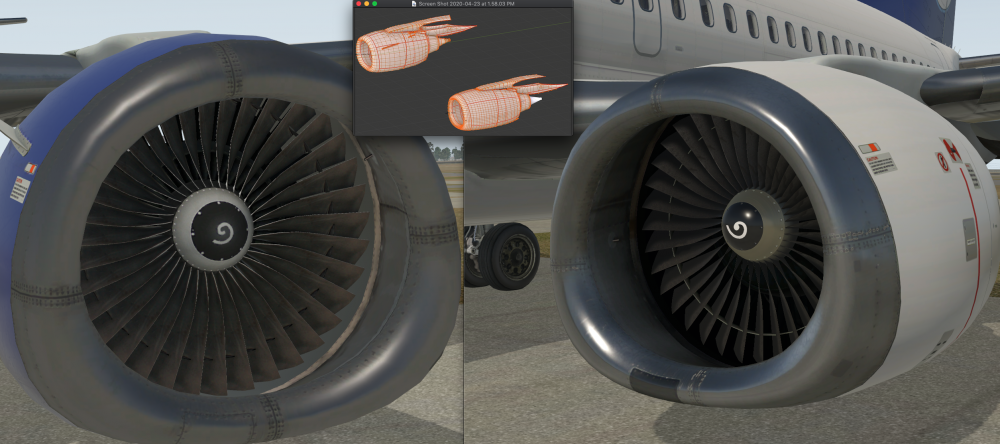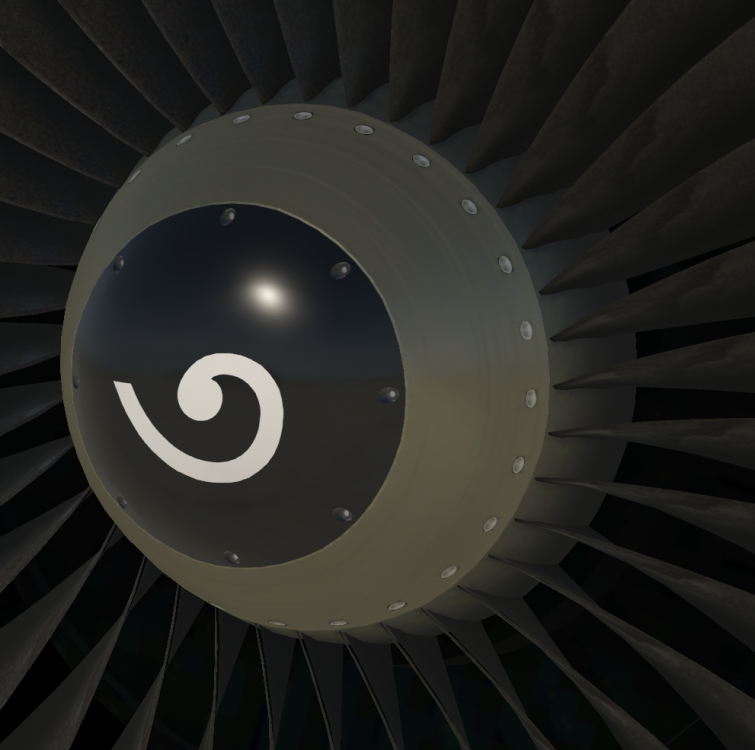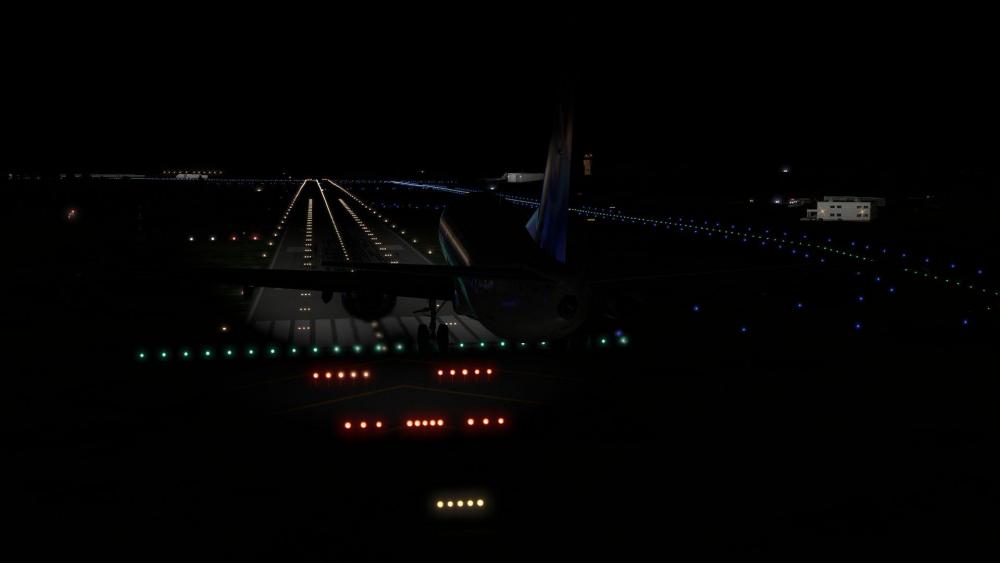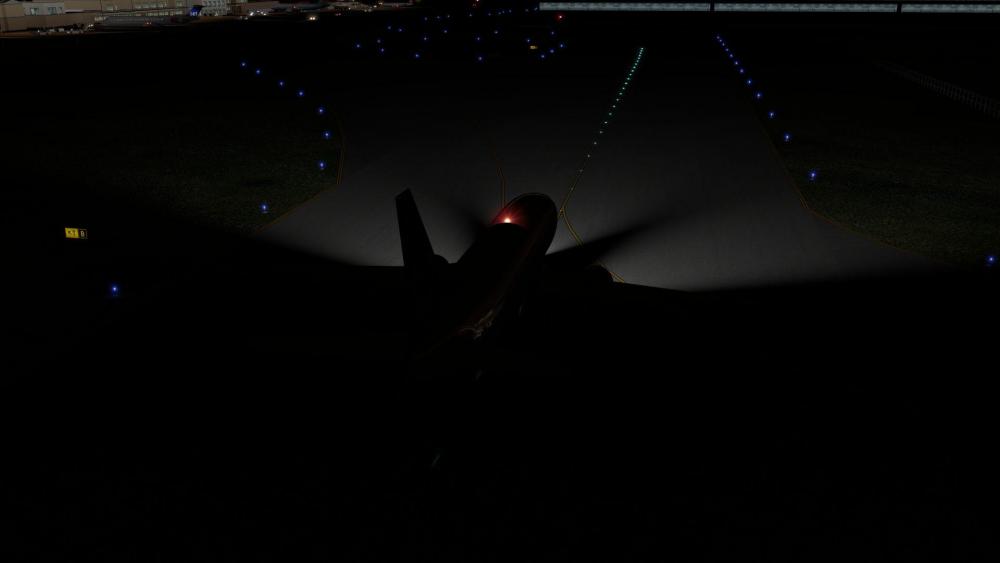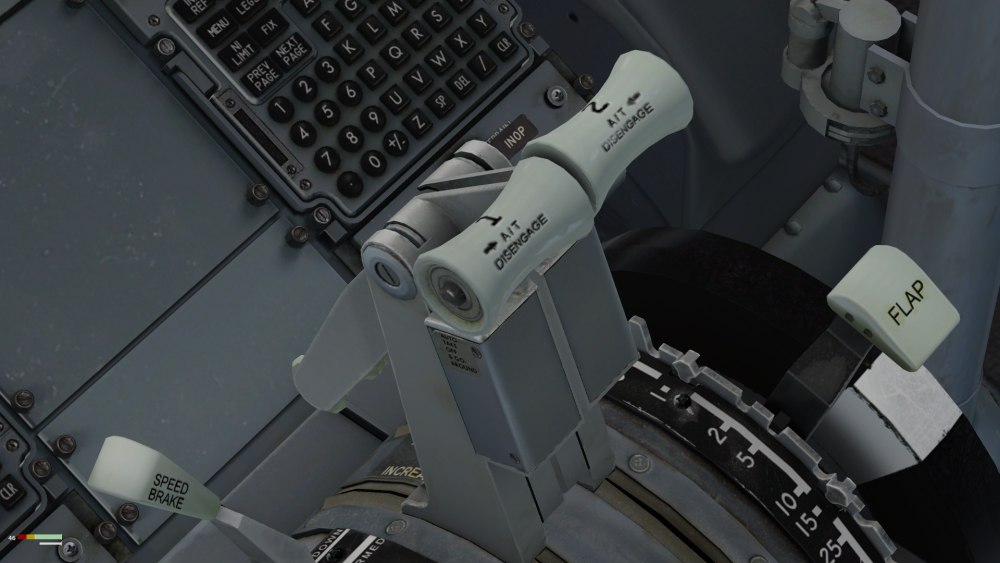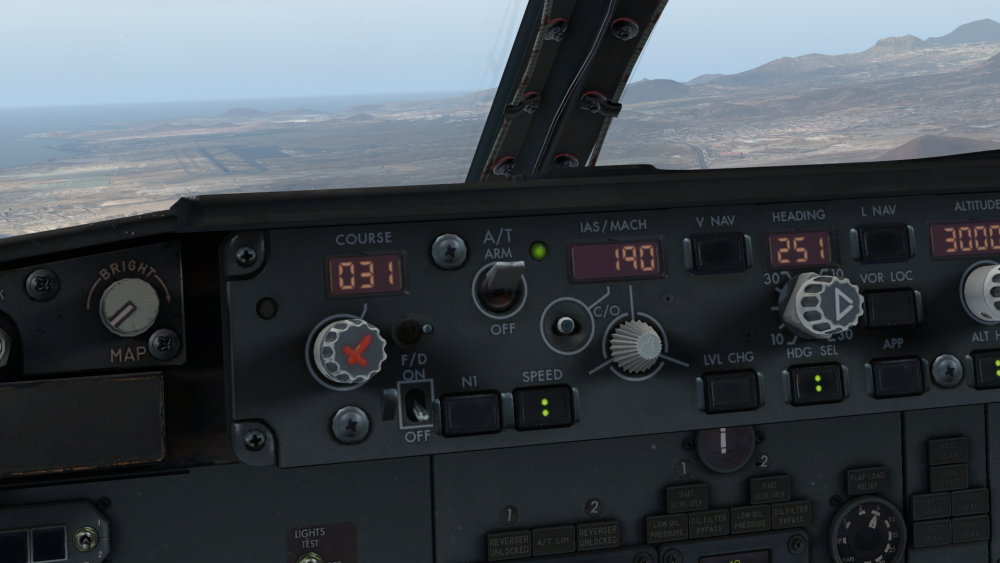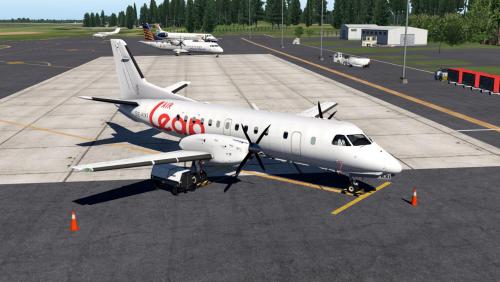Leaderboard
Popular Content
Showing content with the highest reputation on 04/24/2020 in all areas
-
So we finally have something visual to show for the next update. With our 3D toolchain in place, we are able to make 3D updates reasonably quick... thoughit still takes time to add in the detail. This is a screenshot showing a typical mesh refinment before/after. Whereas when we started the 737 10 years ago, we had to be conscious of our polygon count, its not as bad as it was and X-Plane and modern hardware can suppport more detail. So as we move forward with our updates, we will be making these kinds of refinements around the airplane...moreso out of the cockpit than in, because the cockpit was done pretty darn well the first time IMO. We'll show more sneak peeks as we have stuff to show. -tkyler10 points
-
I am shooting for custom waypoints for this patch, PBD, PB/PB and Lat/Lon..., I have the code to parse the entries added, but haven't yet to ties these into the route editing / leg naming. The other issues, as mmerelles said, will come after the patch. I want to stress, that with the up-to-date workflow...patches and features are able to come much quicker than has been the case. So if we don't get some FMS feature in the next patch, we'll immediately continue working on the FMS and release featues as they are completed. -tkyler3 points
-
No FMOD/FMC development is expected on the upcoming patch, they split development in 2 branches to release the converted 3D aircraft to XP11 standards + tweaked flight model and no longer delay due to the extensive coding requirements for FMOD/FMC features. note: the answers you are looking for are below, pay attention to the last 2 posts specially were Tom explains they split development in 2 branches not to delay everything awaiting for the FMC/FMOD large coding requirements.3 points
-
2 points
-
A long as something is 'distinguishable from video / photograph / sound / behavior", then there will always be something to pursue for improvement, whether we do so or not. There is an enormous amount of visual detail and functionality that is still to be had and which we intend to continue working on. -tkyler1 point
-
As we all know and Jan very well explains in the video tutorials, the A/T can be disengaged using two methods: 1) Pushing the "A/T disengage" button located on the side of the throttle levers twice (second time to cancel the alarm). This disengages the A/T and also disarms it. 2) Deselect the active thrust mode, for example, by pushing the SPD button on the MCP if it's lit up. This will "uncouple" the A/T but leave it armed. Technically it is still "engaged" in ARM mode. Some airlines prefer method 2 as the idea is that it leaves the A/T armed in case of a go-around. Other airlines however don't encourage it or outright prohibit this method. It's interesting how different operators view things in different ways. I have looked into Boeing's FCTM to see what they say, and it seems that they don't recommend method 2 either because, quote, "the autothrottle ARM mode is normally not recommended because its function can be confusing". It's interesting that Boeing themselves admit that their own system is confusing, and also that they don't really give an elaborate reasoning as to why it is so confusing. Now, here are some important points of the A/T ARM mode: 1) It provides minimum speed protection in the event the airplane slows to minimum maneuver speed. 2) Gust protection is NOT provided. 3) If the A/T is left in ARM mode during a descent to an MCP altitude (for example, the MDA of a non-precision approach), the system will wake up and engage in SPD mode to level off at the MCP altitude. This can be unintended behaviour if we are flying manually and have gained visual contact with the terrain. Of course one would argue "well why did you not set the MCP altitude to the MAA (missed approach altitude) in the first place?", which is a fair question that can be discussed separately. This is something to bear in mind though. So in my view, I personally prefer to fly either fully manually (both A/P and A/T completely disengaged) or fully automatically (both A/P and A/T engaged and active, not just armed). In case of a go-around if I hit TO/GA the go-around mode will activate in the FMA but I will have to manually advance the thrust levers to set go-around thrust. Fine by me. Your opinions, gentlemen? (and ladies if any, let's be inclusive...)1 point
-
That is correct - Airbus recommends to keep autothrust on (they know the pilots they train )... Airbus´ flight-law augmentation will compensate the pitch moment from the engines for you, so this does not pose the same problem that Boeing has. Cheers, Jan1 point
-
Go to x-aviation.com -> my account->login->within your orders list you have the download links. It will install latest version available 2000ft but at what distance? maybe you were too close to the airport and the glideslope below you already. You must intercept from below if you can share a screen capture or video we can be sure what is going on known bug, nothing to worry What you mean by, "there are a a few?". Not all the waypoints have populated speeding/height on the legs page? This is a good indication you did not fill up all required performance data on the corresponding pages. note: the FMC will compute/populate speeding/height predictions automatically to all waypoints in the flight plan once all required performance data is entered properly for it to calculate a valid vertical profile. The ones having speed and/or alt restrictions are due to being hardcoded on the SID/STAR procedures you selected on the DEP/ARR. hope this helps1 point
-
Hi Jaime, can´t resist a good discussion like this ;-) You summed up the operation of the different modes nicely. I would just like to clarify the function of the ARMED autothrottle mode. In this mode the autothrottle will "wake up" whenever it is triggered by any of these events: autothrottle reversion (low speed, placard) TOGA mode activation (take off, go around) automatic activation (MCP SPD, RETARD) in case of pitch channel mode change while in autopilot or flight-director flight OR triggered by yadar altimeter during approach at 27ft RA if in MCP SPD. The last point is the one that offers reason for different views. It was originally implemented as a safety feature. The logic is that it would be dangerous if the pilot forgets to add or reduce thrust when the pitch channel changes (i.e. the plane levels off -> gets too fast). So Boeing thought it would be good if the "current speed" is maintained automatically. The downside to this good idea is that when you are flying manually WITH flight-director (the majority of airline pilots in many parts of the world can not fly without it anymore), this MCP SPD mode will engage again and again. First when ALT ACQ engages, then again when ALT HOLD engages, then again when you command a vertical speed, and so on. While this is a nuisance (you have to command "deselect MCP SPD" to the pilot monitoring all the time), it has also caused confusion. Many pilots did not understand this behaviour and have gotten in trouble controlling the aircraft manually while the autothrottle commands thrust (pitching moment!). The danger here is that the autothrottle reduces thrust on level off (to maintain speed) and the pilot does not notice - the nose will sink! Now the pilot pulls back to climb back to the assigned altitude and the autothrottle will increase thrust to maintain the speed in the climb - now the nose rises too much! Try to fly the IXEG with autothrottle commanding speed for you - it is not that easy! So Boeing had to act and recommends now to totally disengage the autothrottle when in manual flight (with flight director). Of course it is more dangerous to fly without the autothrottle in ARM (one less safeguard against speed mishaps), but the above behaviour is also dangerous and they probably had to weigh what is more likely to cause a crash. Two more remarks: 1.) You NEVER set the MCP ALT for the MDA for a non-prec approach (if flying according to real procedures). It will be set to the missed approach altitude. Setting it to MDA is dangerous, because you could forget and then the autopilot will try to level off! ESPECIALLY with the autothrottle in OFF this is a recipe for disaster. 2.) The autothrottle is supposed to provide gust protection on approach. That is why you don´t set any wind-correction speeds while doing an automatic landing. The autothrottle is supposed to handle that. I personally think that this is a lie (from what I saw during the automatic approaches I did in the real aircraft), but the reasoning here is probably that a.) on a low-vis approach (with it´s associated wind limits!) the wind isn´t strong and b.) even if the speed decays by 10 kts before the A/T covers it - its not going to kill you ;-) So in conclusion: If you fly manually, fly with the autothrust not commanding speed. It is ok to have it command N1, of course. I personally would recommend having it in ARM during the approach at least (where you are likely to encounter a low-speed situation). Setting go-around thrust manually while at the same time flying the aircraft manually (you have no second pilot to do it for you in X-Plane) is at least very challenging. You want to hit the correct N1 value fairly quick to stay within the certified performance for the go-around. It works well to have it in ARM during fully manual (no flight-director) flight as well. It won´t engage during level-off or other pitch-channel changes (since the pitch channel of the FCC isn´t even working). Having it in ARM will provide the benefits of it´s protection, though. If you fly manually with flight-directors...go with the Boeing way, I guess. Cheers, Jan1 point
-
Same problem here. Already reinstalled and disabled all non necessary plugins. Log.txt TBM900_Log.txt1 point
-
1 point
-
The recording of JonFly's stream from yesterday is now available on YouTube:1 point
-
That is working beautifully now, thank you very much!! I can understand enough that I've tweaked the values to suit my preferences, but that is 0.01% of the work. Thank you @jfjoubert and @Ch.Cole for providing the other 99.99%!1 point
-
1 point
-
Hi there, I just bought the TBM on X-Aviation and can't wait to play with it but I have a problem with the crash bar not wanting to stay up. My Gizmo plugin is alive and well. But I probably have traced the problem to the fact that the aircraft is looking in a directory that can't be reached because of two slashes instead of one, just before the Output directory: 2020-04-24 18:48:00 TBM900[helpers.c:1123]: Cannot open directory E:\X-Plane 11\X-Plane 11\\Output\TBM900\state: The system cannot find the path specified. I have a few of these errors in the TBM900 log file. Any help would be really appreciated. Thank you, E. TBM900_Log.txt Log.txt-1 points




